
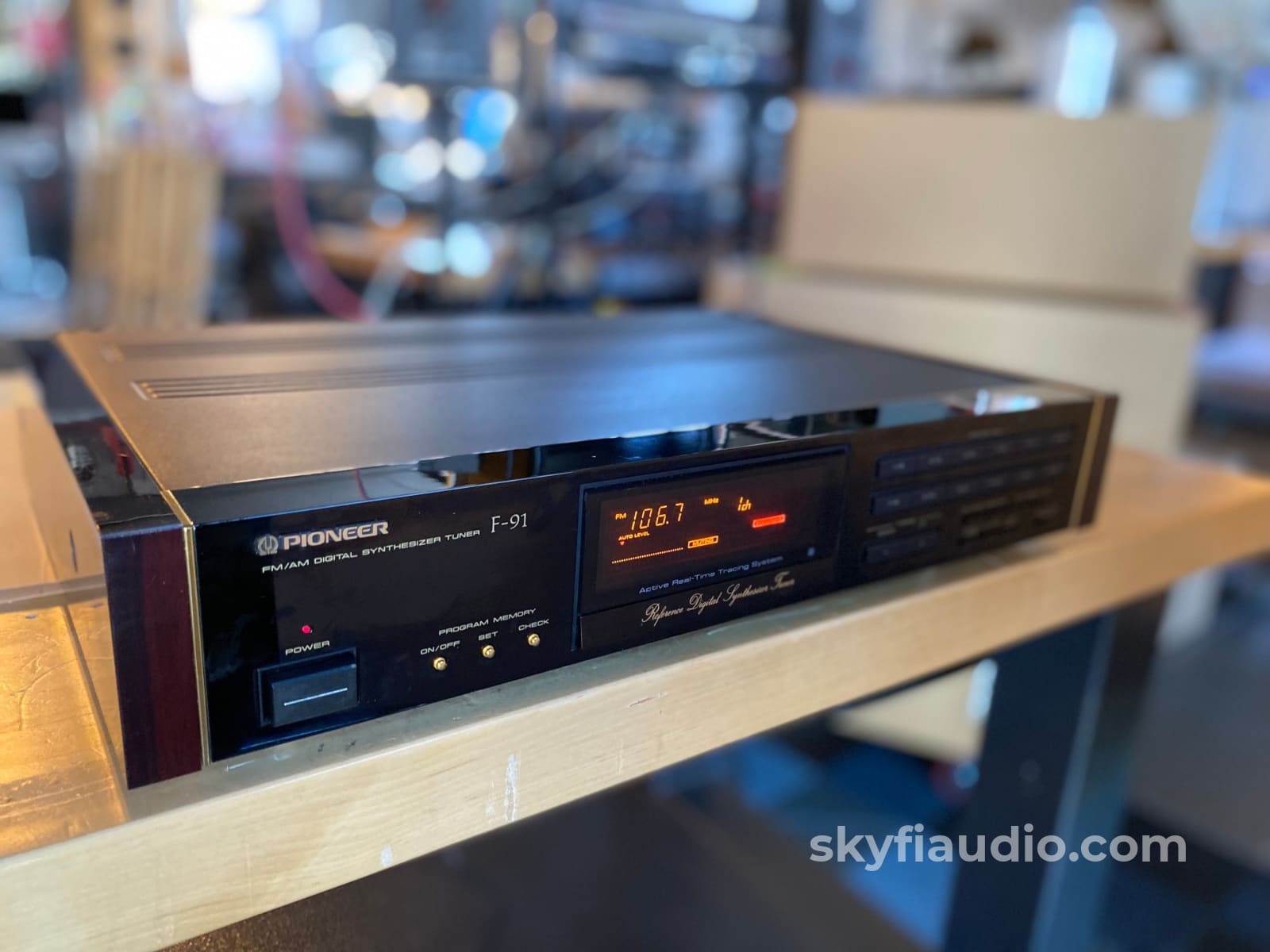
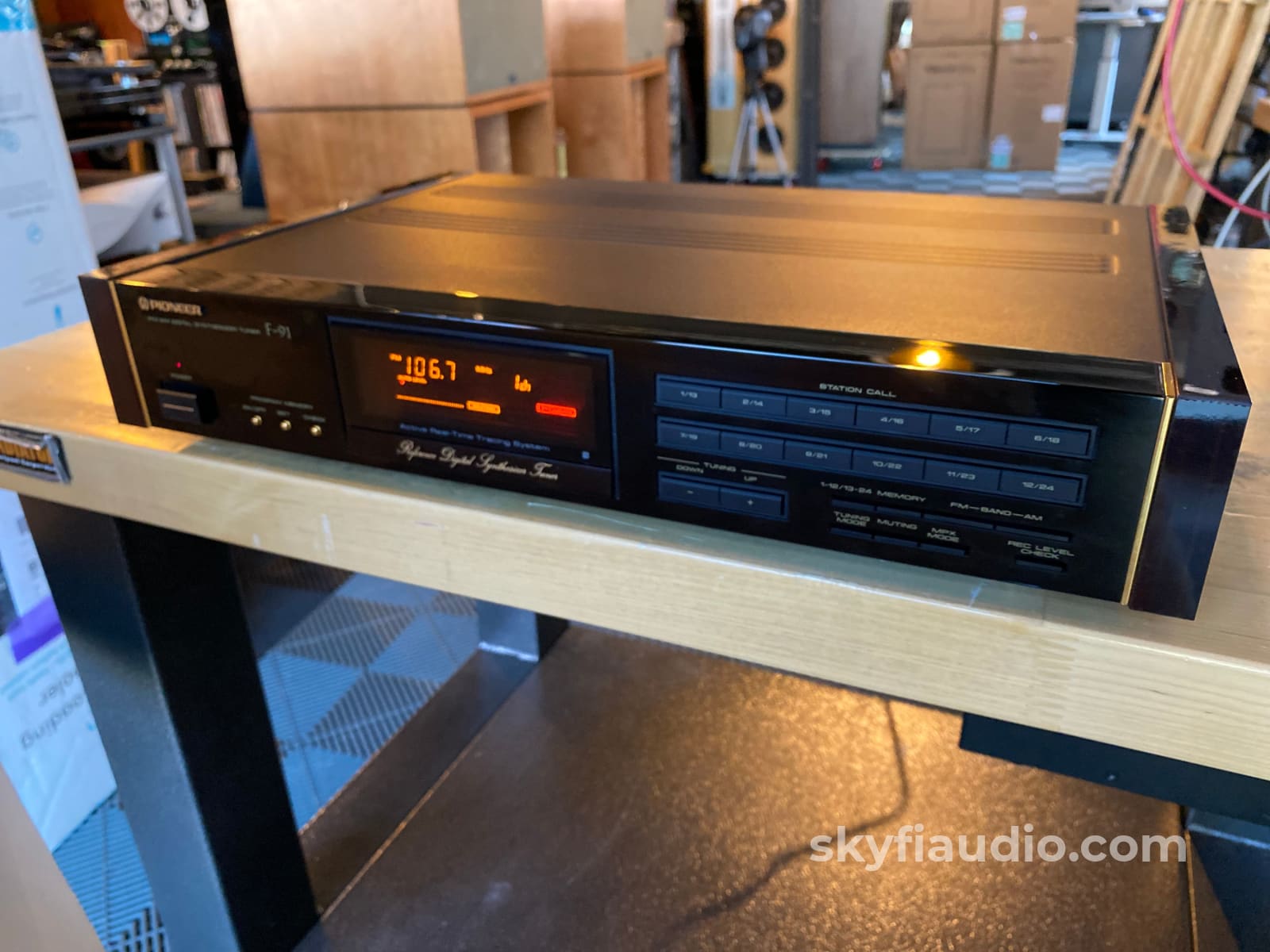
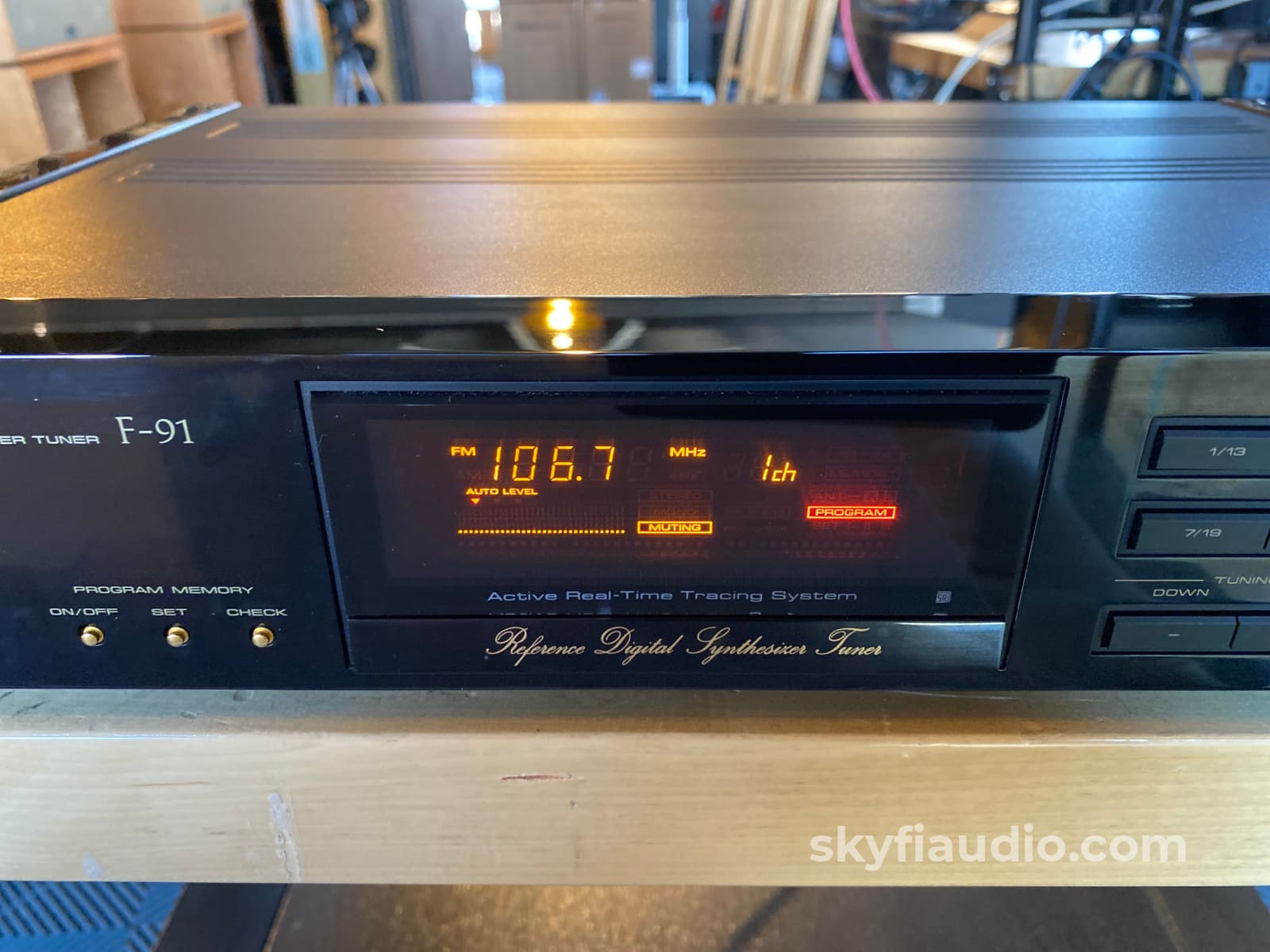
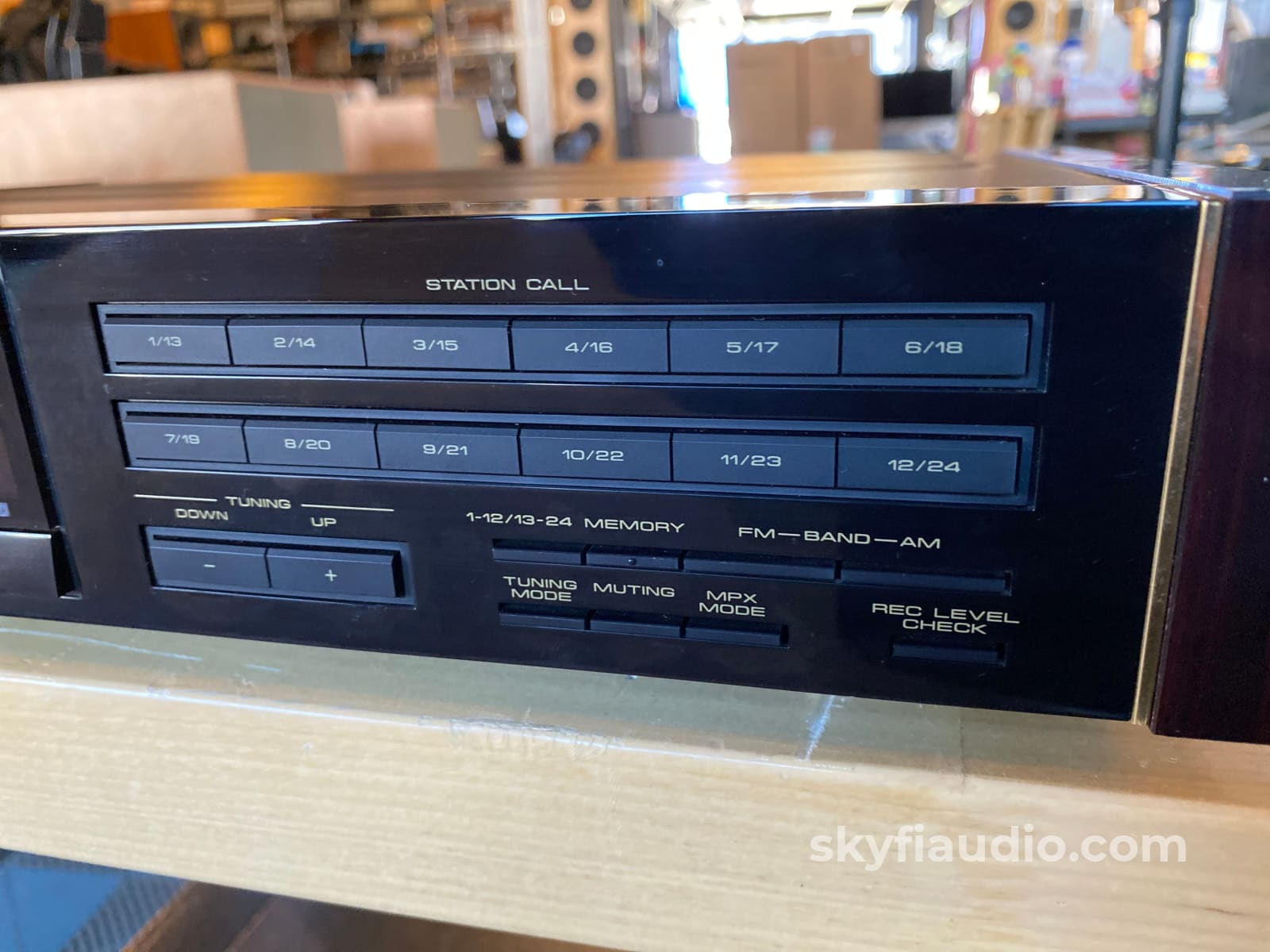
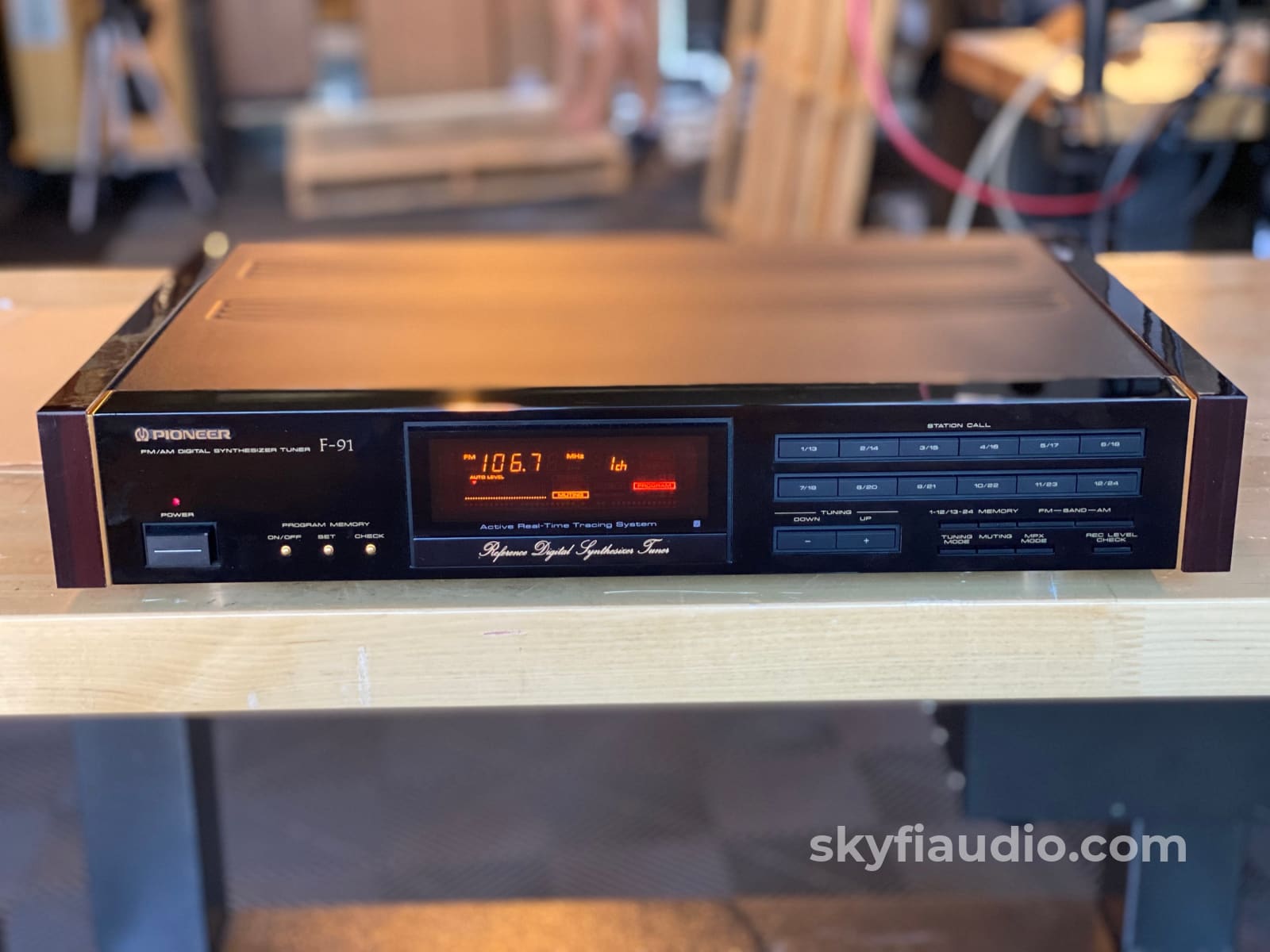
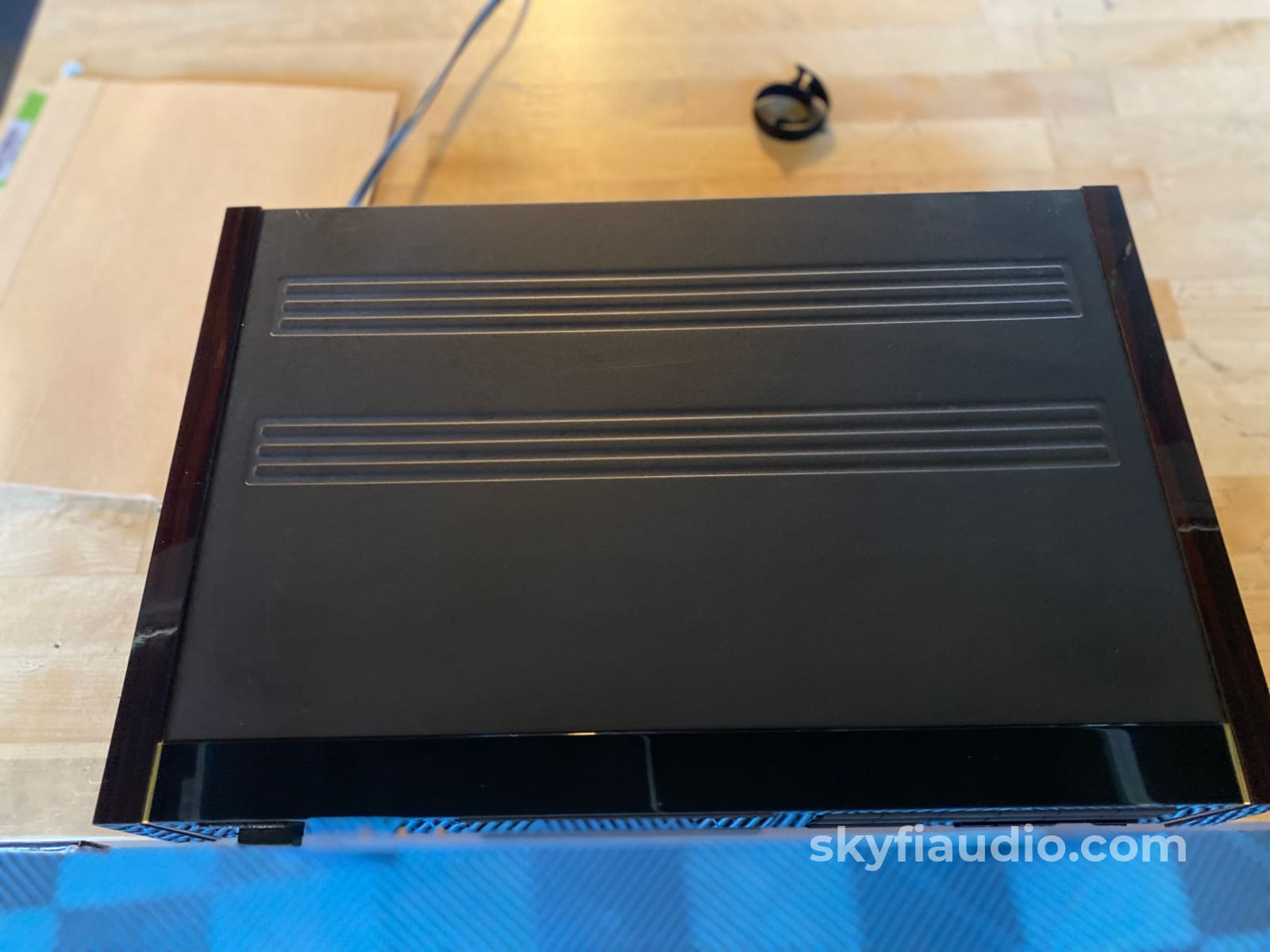
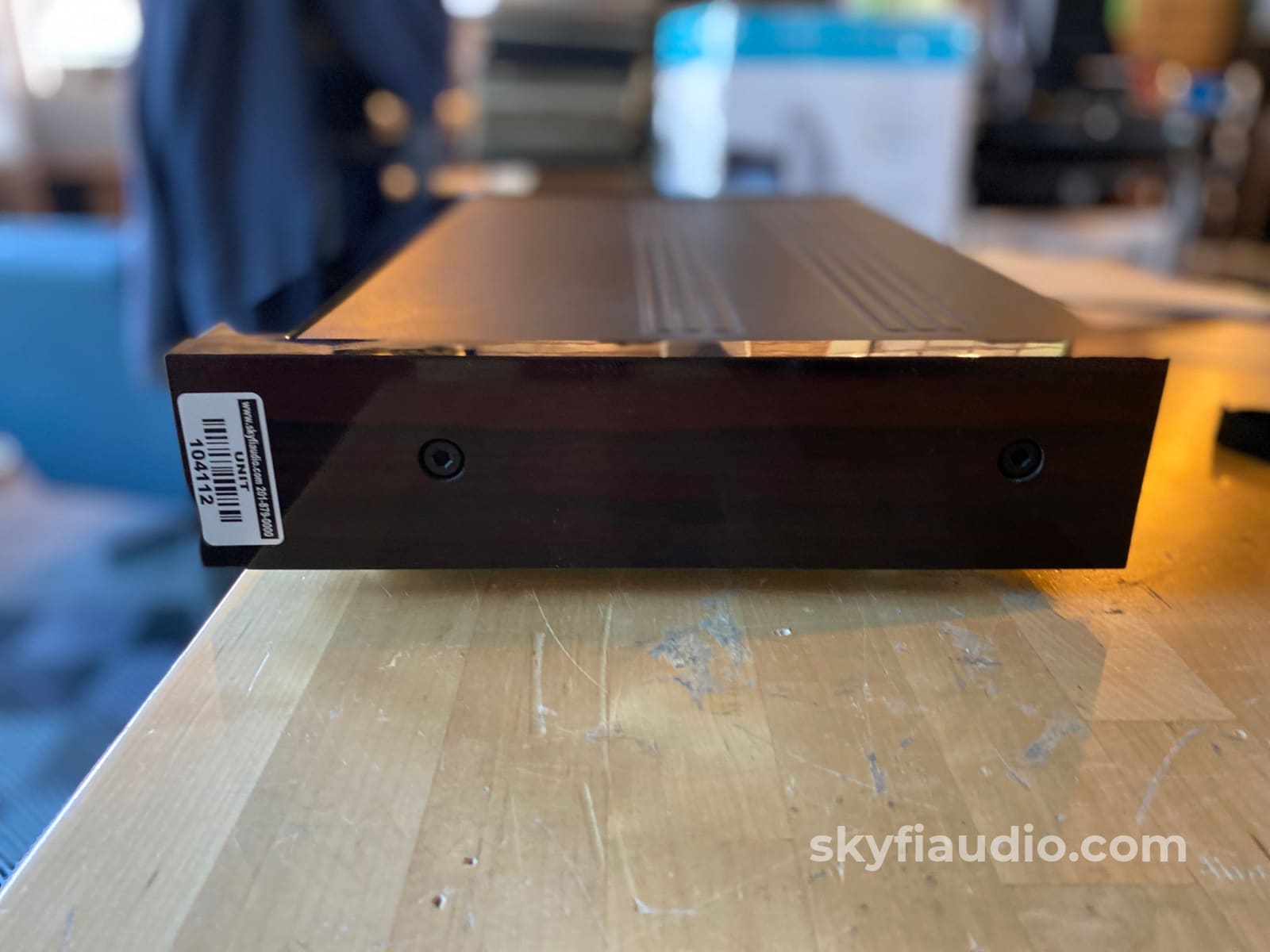
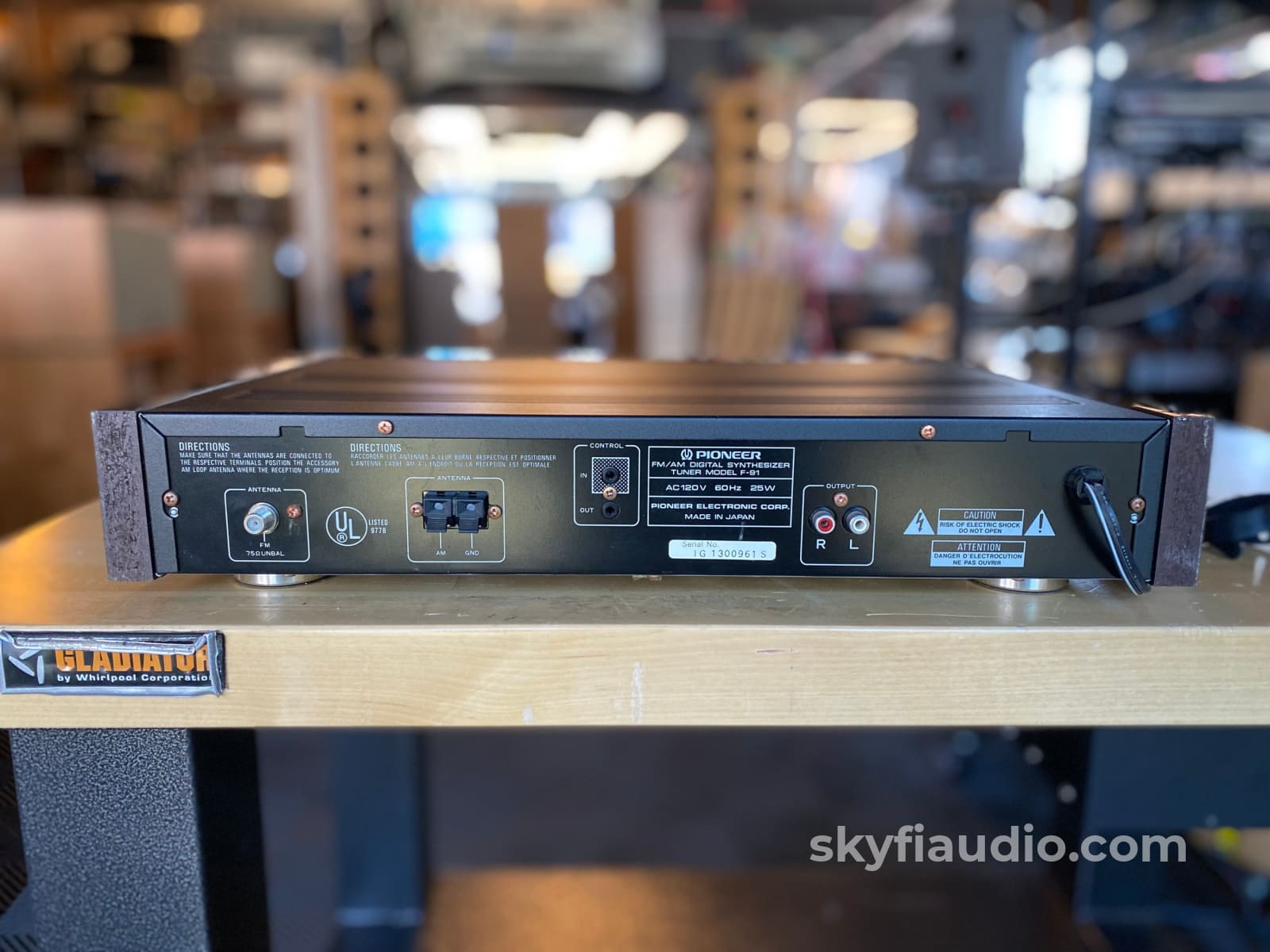
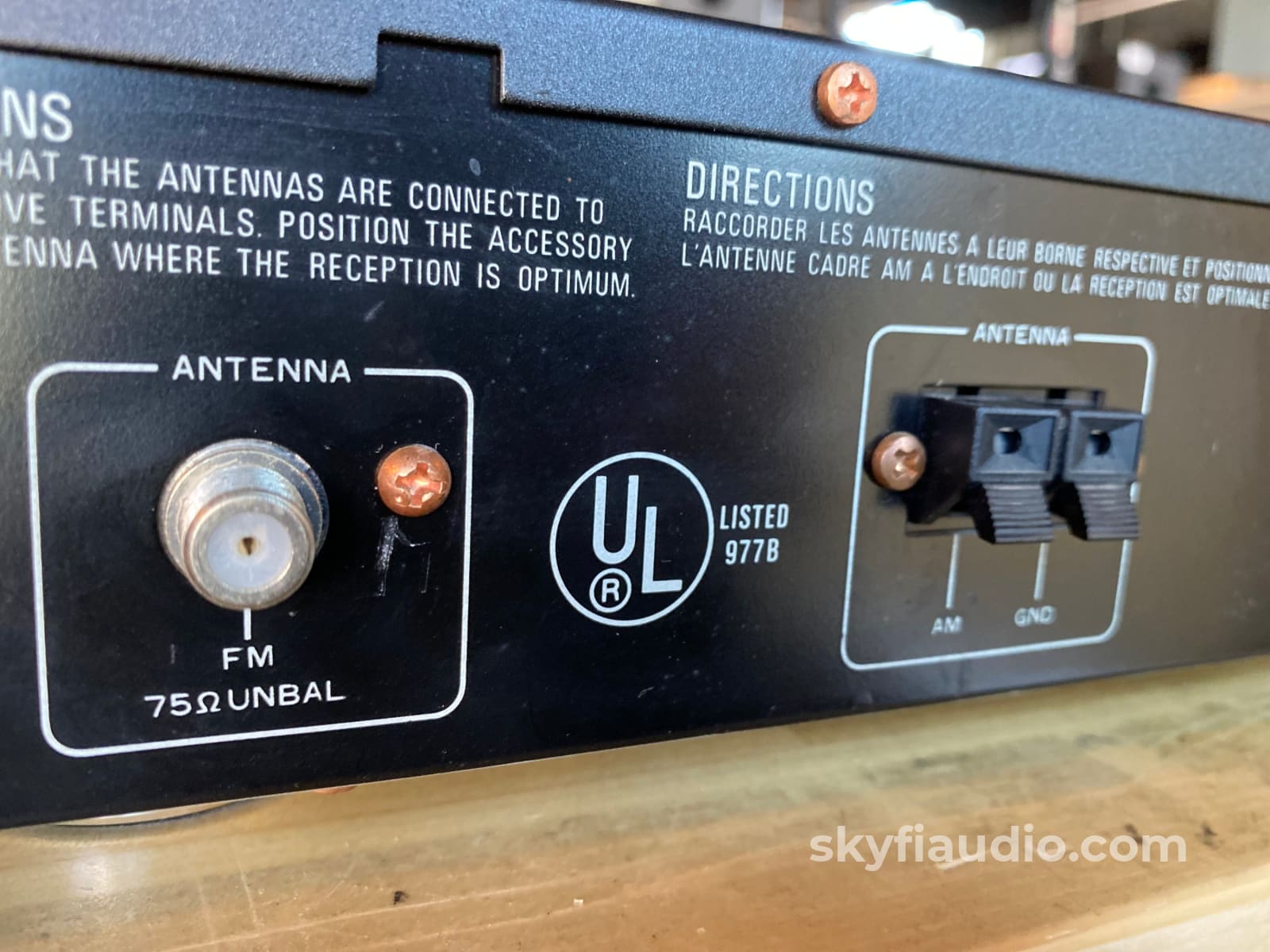
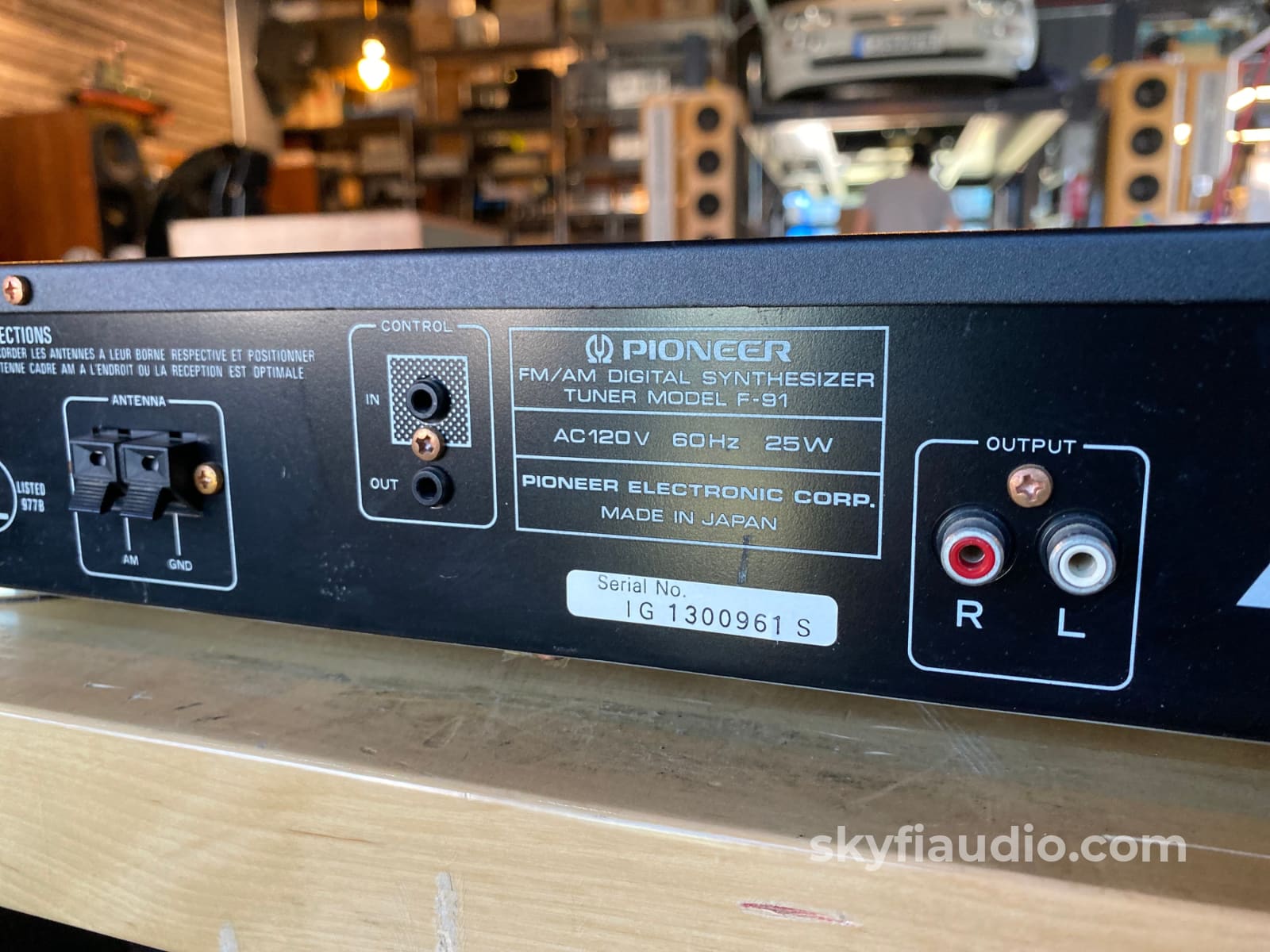
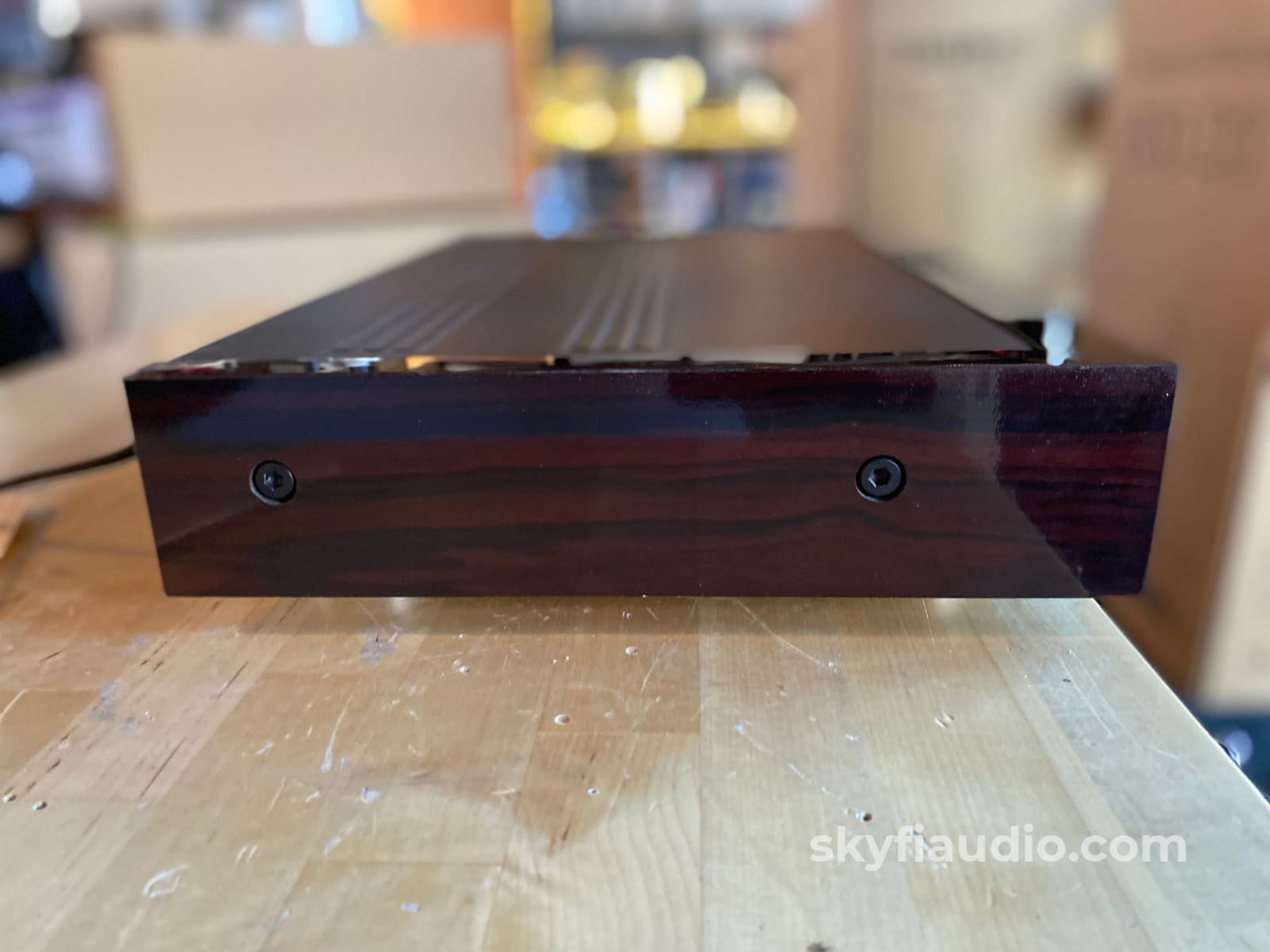
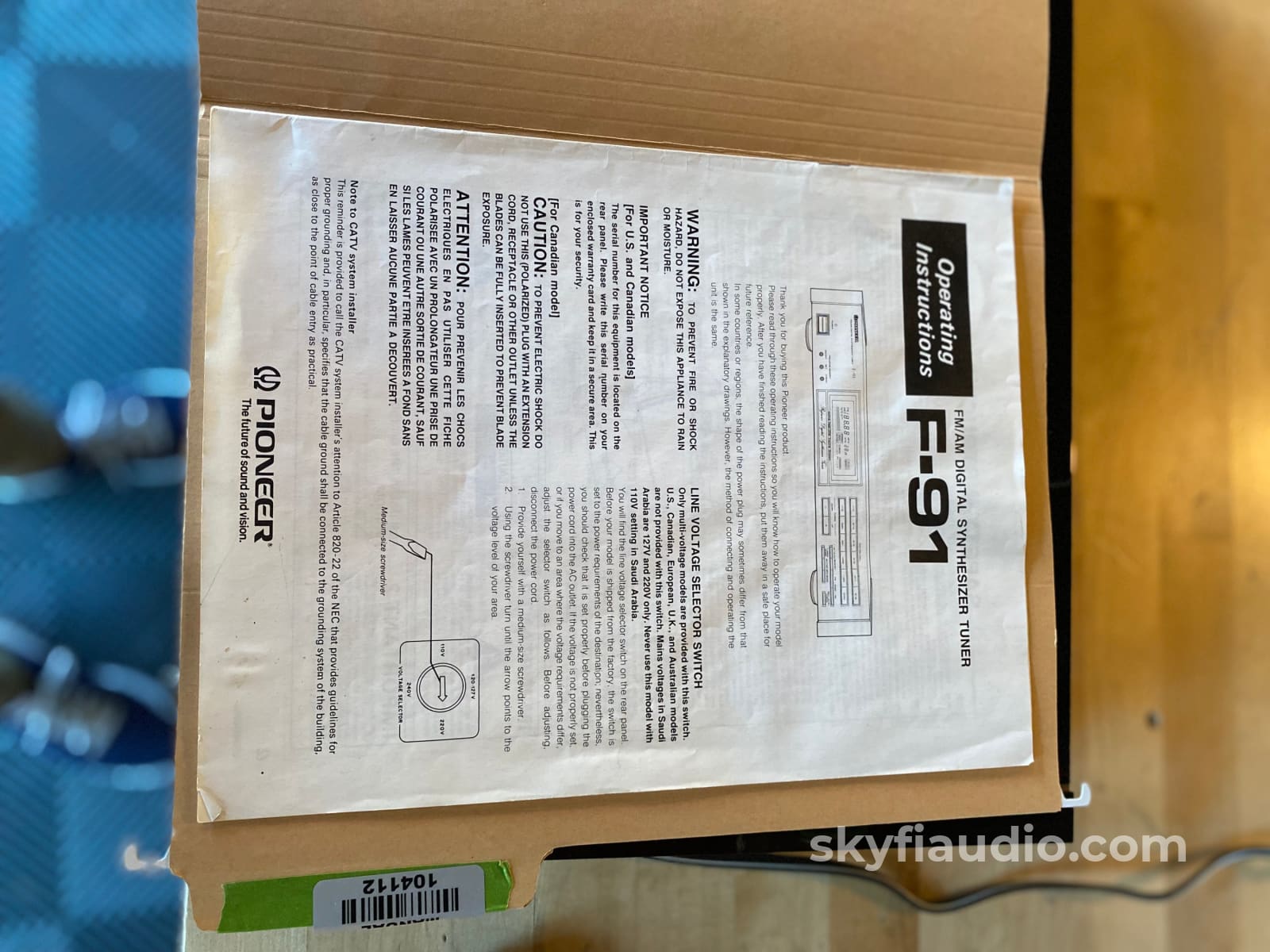
Pioneer Elite F-91 FM/AM Digital Synthesizer Tuner
Free Shipping on Most Electronics - Excludes Speakers and Items Requiring Freight - Contiguous U.S. Only
Pickup currently unavailable at SkyFi 479

Pioneer Elite F-91 FM/AM Digital Synthesizer Tuner
SkyFi 479
479 South Broad Street
Glen Rock NJ 07452
United States
Solid performing no-nonsense tuner in the Pioneer Elite finish and a perfect match to our other Elite series components.
Click here to view all Pioneer Elite curently listed on our site
More from The Tuner Information Center:
"The F-91 was part of Pioneer's "Elite" series. It's quite sensitive and has excellent sound, with particularly superb bass. Our contributor PZ says: "I find the F-91 to be an interesting unit. It adjusts the IF bandwidth and tuning frequency automatically to match the need of the signal, called ARTS for Active Real-time Tracing System. [This sounds similar to Onkyo's "APR" system, with one critical difference: one can always manually override the APR settings on all Onkyo tuners. - Editor] So DXers don't have anything to fiddle with. In fact, the 8-segment meter starts at 30 dBf and goes up to 77 dBf, so it doesn't help you find the weak stations. On the other hand, 50 dB quieting in stereo is achieved at 34 dBf, better than most.
So even with one bar lighted on the meter, one gets decent stereo reception." David Rich discusses the ARTS system in his article in The Audio Critic. As our panelist Bob then understood it, ARTS "uses a real time moving IF filter that moves around with the IF signal. So I believe this means it is incredibly narrow by default, and its center is moved around on the fly. I don't understand how they do it, but apparently it was so complex to build and keep aligned that they never used it again in any other model."
Here's some more info on the F-91, in Pioneer's own words: "Elite Reference Digital Synthesizer Super Tuner: We've pushed the level of FM sound quality to record highs with the addition of two Pioneer exclusives to the F-91.
The first is the ARTS (Active Real-Time Tracing System) included in the IF section of the tuner. With some tuners, especially expensive ones, you have the choice of using a narrow or wide IF bandwidth. The first lets you avoid interference, but you have to settle for an increase in distortion. The second provides lower distortion and better sound, but interference may get in the way. Pioneer ARTS - it's simply the best of both worlds: its IF filter actively follows the desired signal while rejecting interference. Now you can enjoy both the low distortion of a wide bandpass and the high selectivity of a narrow bandpass. Sensitivity is much improved, too.
The second Pioneer feature is the Digital Direct Decoder Type III. It takes the output from the ARTS IF circuitry and converts it into digital form before directly turning it into stereo analog signals. Thanks to pure digital operation, our DDD Type III is less prone to signal degradation. Moreover, in the Type III, we've simplified the circuitry using a new PLL detector, which has reduced noise even much further. Improvements extend to other circuits of the tuner as well. The front end, for instance, features an ID MOSFET to improve reception. Indeed, the front end is as highly sensitive and selective as an elaborate 4-ganged tuning capacitor. The F-91, like Pioneer amps and CD players, is designed based on our anti-vibration concept to damp harmful resonance and vibration for improved sound. We've turned circuits into modules and filled them with epoxy resin. And we've added honeycomb ribs to the chassis and used large insulators to shut out external vibration."
Recommended Cables:
Kimber Kable - RCA Interconnects - Better
Kimber Kable - RCA Interconnects - Best
Approximate Age:
1987
The SkyFi Testing Process for FM Tuners:
We start with a visual inspection of all internal components to make sure that there are no signs of heat stress or damage. Capacitors are checked for telltale signs of predictive failure including bulging, shrunken wrappers, or physical leakage. We also inspect the PCBs for discoloration from resistors or transistors that may have been running hot. On vintage units we often spot check select capacitors for value and ESR. Vintage analog tuners also have moving parts related to the tuning gang and dial string. These parts are inspected for smooth operation.
If the unit passes visual inspection it is bench tested for a handful of key performance parameters using a Sencore SG80 AM/FM Stereo Analyzer. The SG80 allows us to “simulate” an ideal radio station using precision test signals instead of music. This device, in conjunction with an oscilloscope allows us to properly evaluate the following parameters:
- AM Reception (Where Applicable)
- FM Mono Reception & Tuning Meter Function
- FM MPX Reception (Stereo)
- Dial Tracking - How accurately the tuner dial or display indicates the actual frequency of the broadcast being received.
- Stereo Separation - A properly working stereo tuner will have minimal crosstalk between the left and right channel.
- Sensitivity & Signal Strength Meter Function - By lowering the output of the SG80 we can simulate weak stations and determine how well the tuner will be able to pull in weak distant stations. This adjustment also helps us verify signal strength meter function.
If the tuner has acceptable performance related to the parameters above we connect the unit for listening tests with a simple dipole antenna. We listen for audio reproduction quality of local stations and evaluate how many stations the tuner can receive while we sweep through the dial. We are looking to verify that the tuner can decode stereo on strong local broadcasts and pick up a wide variety of local stations at the bottom, middle, and top of the frequency band. At this point we also test convenience features such as muting, filters, built in oscilloscope function, etc.
We finish up with an extended listening test on our long term test rig. We tune in a strong local station and monitor for drift over a 2-3 hour period.
|
Item |
Included |
|
Original Box |
Not Included |
|
Manual |
Yes Included |
|
Remote |
Not Applicable |
|
Cables |
Yes - Power Only |
|
Physical Condition (Info Here) |
7 / 10 |
|
Working Condition |
10 / 10 |
Choose options













